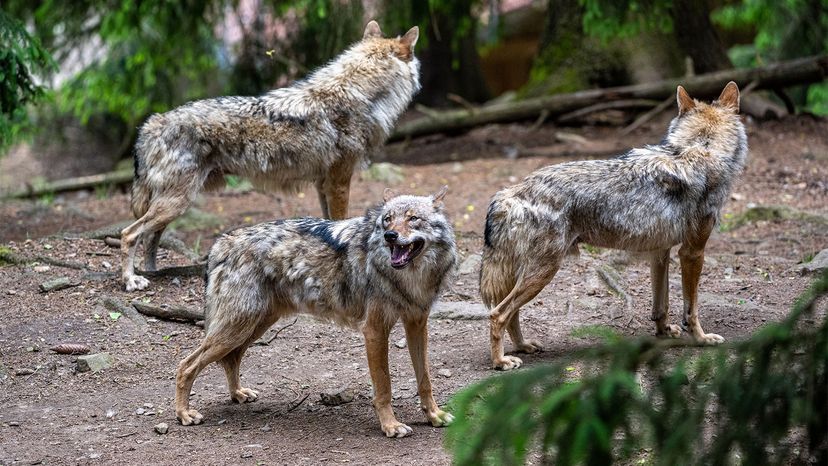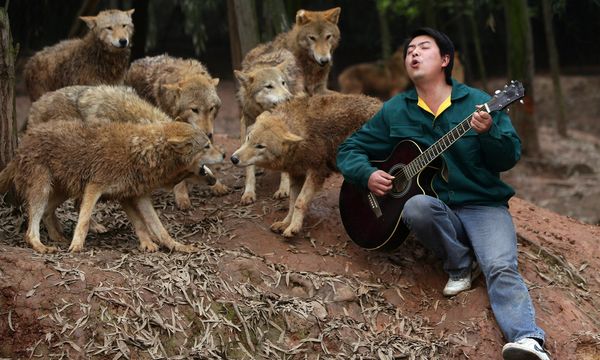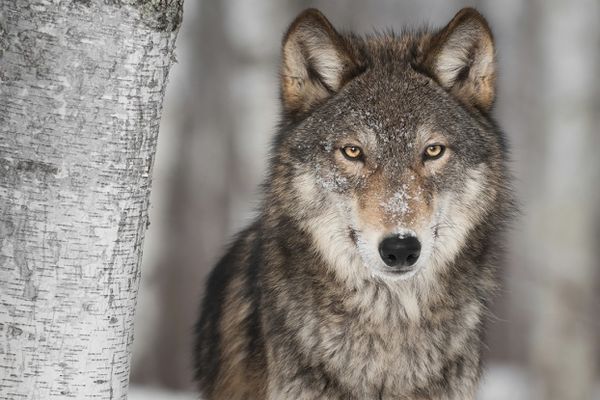You can find all sorts of high school and college athletic programs named after wolves. And why not? In a mascot battle, North Carolina State University's Mr. Wuf would surely vanquish Sammy the Slug of University of California-Santa Cruz.
Grey wolves (Canis lupus) tend to organize themselves into social groups known as "packs," with individual animals both living and hunting together. This behavior gives lupine sports franchises an irresistible metaphor for teamwork.
Advertisement
But in nature, wolf packs operate very differently than most people think. One of the biggest misconceptions involves their power structures.
The "Alpha Wolf" Idea
"Alpha wolf" is a term that gets tossed around a lot in popular culture. The concept as we know it today can be traced back to a 1947 study written by animal behaviorist Rudolph Schenkel [source: International Wolf Center].
According to this idea, wolf packs are led by an "alpha male" and an "alpha female." These top dogs rule the roost by fighting the other wolves for dominance until they've clawed their way up the pecking order.
"By continuously controlling and suppressing all types of competition within the same sex," wrote Schenkel, "both 'alpha animals' defend their social position." [sources: Kjørstad, Davis].
Alpha wolves are said to outrank "beta wolves," who look down on submissive "omega wolves" in turn. All very hierarchical.
This belief — that every wolf pack is a dog-eat-dog environment where some members are constantly vying to climb the ranks by aggressive means — has been repeated in countless wildlife documentaries and nonfiction books over the past 70-odd years. We even repeated that idea here at HowStuffWorks when we first published this article on July 28, 2008.
It's also misleading [source: International Wolf Center].
Schenkel's 1947 paper was describing two wolf packs in captivity. His study specimens were unrelated animals who'd been brought together at a Swiss zoo, where they shared an enclosure measuring 2,153 square feet (200 square meters) [sources: Mech and Boitani].
However, Schenkel didn't look at any wild wolves at the time.
Unlike their counterparts at this particular zoo, natural wolf packs mainly consist of genetic relatives. They also take up way more space, patrolling territories of 1,000 square miles (2,590 square kilometers) or larger [source: International Wolf Center].
Because they don't live under the artificial constraints Schenkel observed, wild wolves (usually) organize themselves in a way that's less competitive.
Noted wolf researcher David Mech had this to say in a 2008 YouTube presentation:
Don't get us wrong: The 'alpha wolf' hierarchy system isn't a complete myth. Again, captive wolf packs (like Schenkel's) have been known to adopt this kind of pecking order.
But outside zoos and other artificial environments, the stereotypical "alpha-beta-omega" social structure is incredibly rare — if it can be said to exist at all [source: "Alpha" Wolf?].
Instead, what we usually see is a howling nuclear family.
Advertisement




